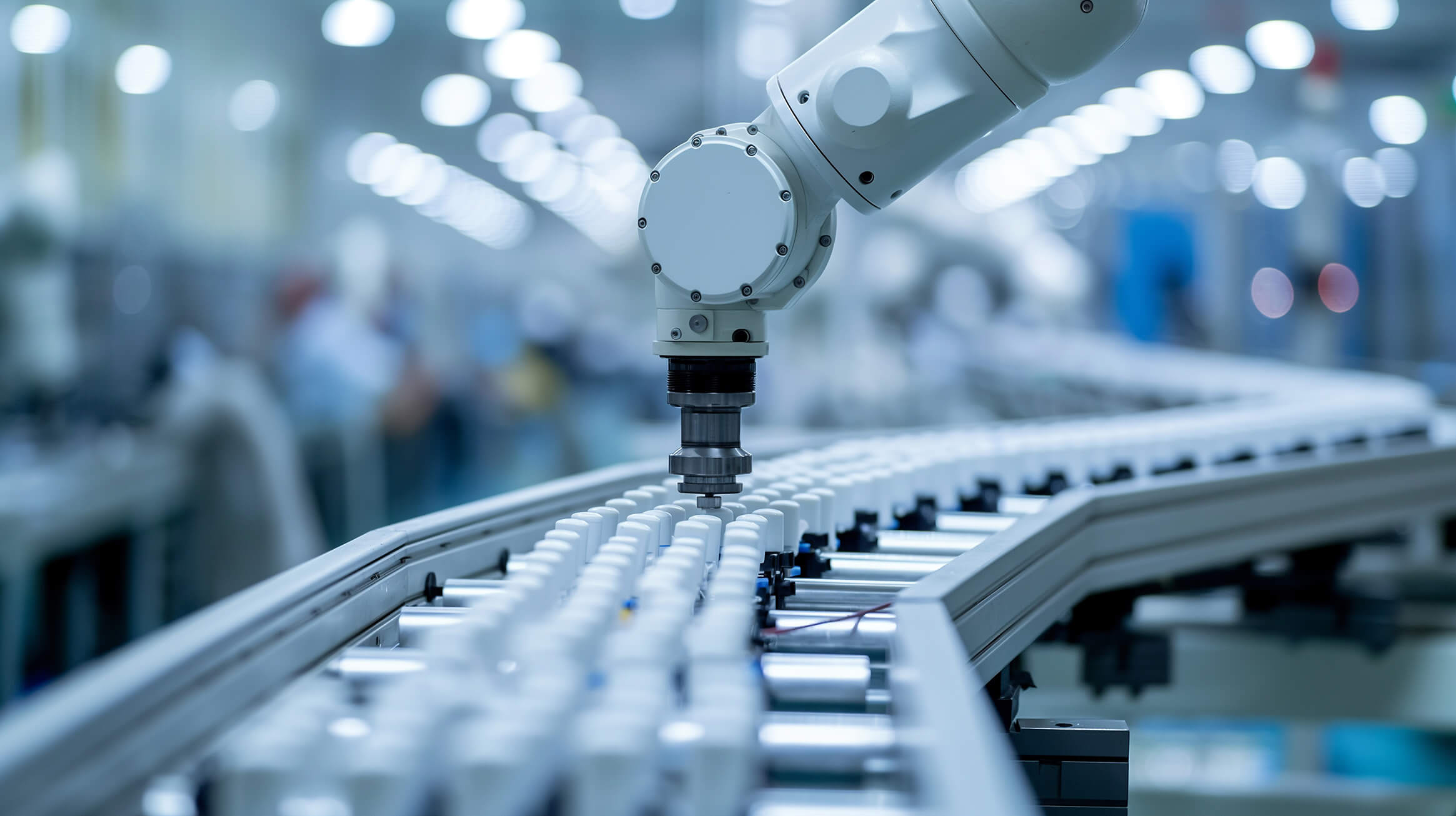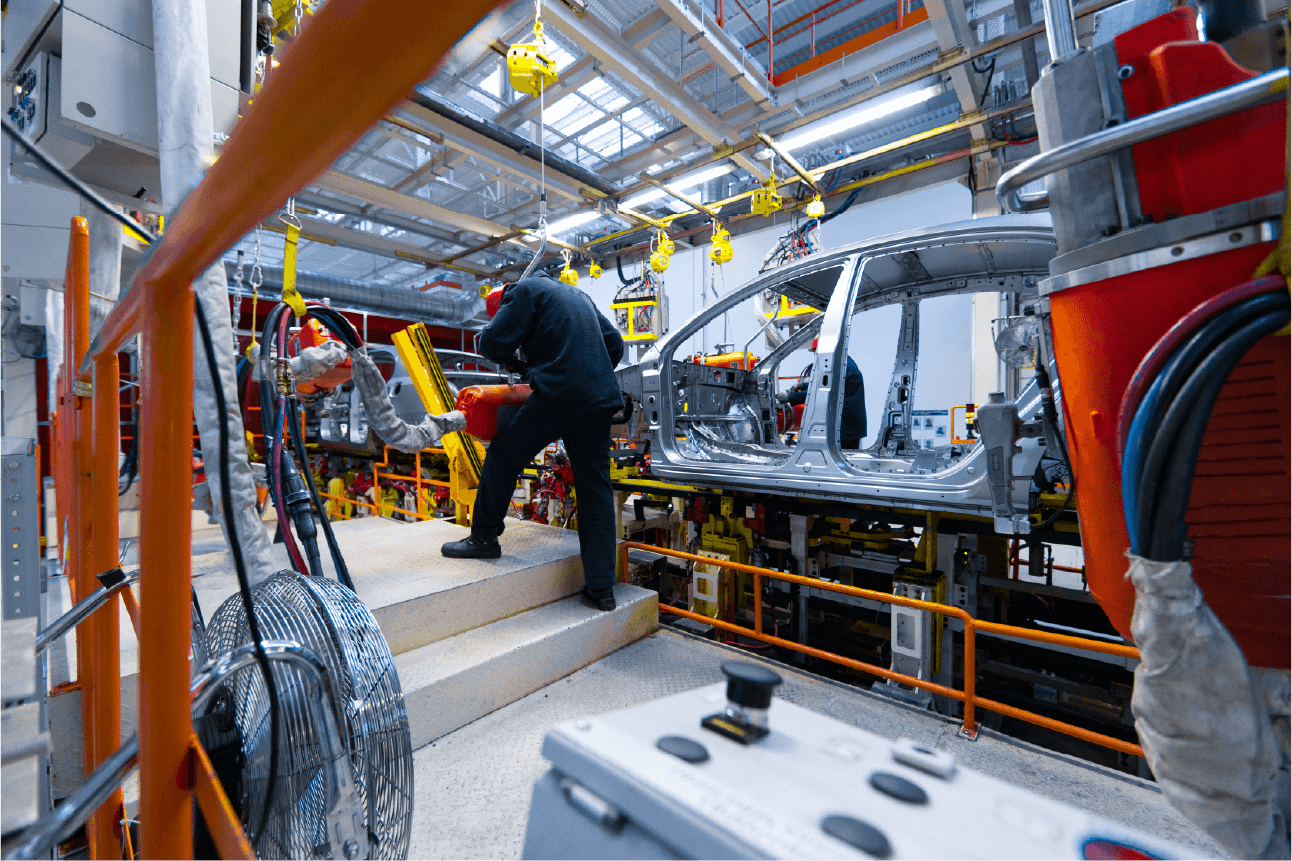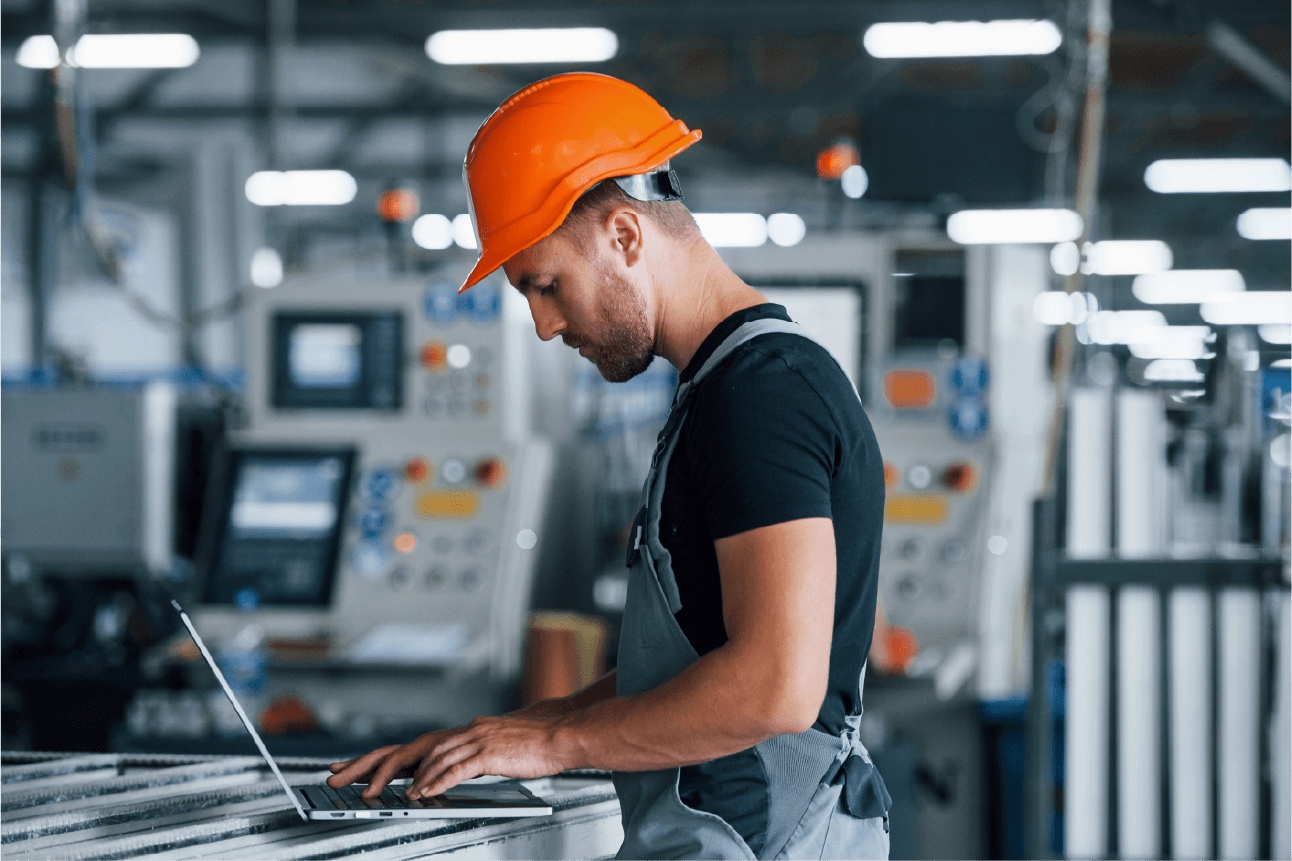Maintaining the highest standards of quality control in the ever-evolving landscape of the manufacturing industry is crucial for the success of any business associated with the production of goods. With the increasing complexity of products and the demand for flawless production, traditional quality control methods often fall short. This is where machine vision in manufacturing makes a difference, offering accuracy and efficiency.
Think of it as a manufacturing facility where every product coming off the assembly line is perfect—no defects, no errors. This level of precision isn't by chance; it's achieved through advanced machine vision systems working tirelessly behind the scenes. These systems ensure each product meets the highest standards, such as identifying even the smallest defects, such as micro-cracks, or ensuring the correct assembly of components with multiple complicated parts.
Maintaining quality in manufacturing is not just about adhering to industry regulations; it’s about exceeding customer expectations and staying competitive in a fast-paced market. Traditional manual inspection methods can no longer keep pace with the demand for speed and precision. Machine Vision offers manufacturers the tools to elevate their quality assurance processes, reducing errors and enhancing efficiency. But what exactly makes Machine Vision a game-changer? Let's understand how this technology is reshaping the manufacturing industry.
Overview of Quality Control and Assurance in Manufacturing
Quality control (QC) and quality assurance (QA) are integral components of the manufacturing process. QC focuses on identifying defects in products, while QA is about ensuring that the processes used to manage and create deliverables are followed and are effective. Together, they ensure that the end products meet the required standards and specifications, reducing the risk of recalls, compliance issues, and customer dissatisfaction. As manufacturing processes become more sophisticated, the need for advanced quality control methods in manufacturing, such as machine vision, becomes more apparent.
Introduction to Machine Vision AI
So, what exactly is Machine Vision? In simple terms, it’s a technology that enables machines to 'see' and interpret visual information. Unlike traditional cameras that only capture images, Machine Vision systems analyze these images in real-time, detecting any deviations from the set quality standards. Picture a system that operates with the precision of a skilled inspector, yet never tires, never misses a flaw, and processes information in a fraction of a second. That’s the power of Machine Vision in Manufacturing.
Machine Vision has become essential in quality control because it automates the quality inspection and assembly verification process, significantly improving accuracy and reducing the dependence on human labor. Whether it’s detecting defects in parts of aerospace such as turbine blades or ensuring an automotive part is perfectly aligned, Machine Vision systems ensure that defects are caught before they reach the end-users.
Decoding Machine Vision: How Does Machine Vision AI Work?
Core Components of a Machine Vision System
A Machine Vision system is comprised of three key components: cameras, and lighting. The cameras capture images of the products, sensors detect position and orientation, and lighting ensures that the images are clear and consistent. These components work together to create a detailed visual representation of the product, which the system then analyzes.
If you'd like to dive deeper into how these components work together, explore our detailed blog on the Key Components of Machine Vision Systems.
Limitations of Traditional Manual Inspection Methods
Despite being widely used, traditional manual inspection methods have several limitations that make them less effective in today’s fast-paced manufacturing environments.
1. High Costs
Manual inspection requires significant labor, which can be costly, particularly for large-scale manufacturing operations. In the automotive industry, thousands of parts, like engine blocks, need to be checked daily for issues such as cracks or misalignment. Relying on human inspectors for this is not only time-consuming but also very costly.
In industries like aerospace, where the quality standards are even higher, the cost of training and employing skilled inspectors adds even more to the overall expense.
2. Time Consuming
Human inspectors work at a limited speed, which can slow down the production process and lead to inefficiencies.
For instance, in the pharmaceutical industry, where high-volume production of tablets and capsules takes place, inspecting each item manually can be extremely time-consuming, resulting in production bottlenecks.
3. Human subjectivity
Even the most experienced inspectors are subject to human error and the inherent subjectivity that comes with manual inspections. Subtle defects may be missing, leading to significant quality issues and expensive product recalls. In the aerospace sector, for instance, an undetected defect in a critical component like a turbine blade could result in catastrophic failures.
Loopr's Machine Vision AI system directly addresses these challenges by removing the human element of subjectivity and error from the inspection process.
4. Limited Coverage
Manual inspection typically involves random sampling, meaning not every product is inspected, which increases the risk of defective products reaching consumers. in pharmaceutical manufacturing, manual sampling inspections might miss a batch of defective pills, leading to health risks for patients and costly regulatory penalties for the manufacturer.
5. Lack of Flexibility
Traditional inspection methods lack the adaptability to handle different product lines or adjust to new manufacturing standards quickly.
For example, when an automotive manufacturer introduces a new model with different components, manual inspection methods require retraining inspectors and adapting the process, which can be time-intensive and inefficient.
Why Machine Vision Is a Must-Have for Modern Manufacturing
1. Precision in Detection
Machine Vision in Manufacturing offers unmatched precision in detecting defects, ensuring that no flaw, no matter how small, is overlooked.
2. Faster Inspections
Machine Vision systems can inspect products in real-time, significantly speeding up the production process without compromising on quality.
3. Reduced Waste and Rework
By identifying defects early in the production process, Machine Vision helps reduce waste and minimize the need for costly rework, leading to more efficient operations.
4. Lower Labor Costs
Automating the quality control process in manufacturing with Machine Vision reduces the reliance on human inspectors, resulting in significant savings in labor costs.
5. Improved ROI
With faster inspections, reduced waste, and lower labor costs, Machine Vision in Manufacturing provides a strong return on investment, making it a smart choice for companies looking to enhance their bottom line.
Industries Embracing Advanced Quality Control
Several industries are at the forefront of adopting machine vision systems for quality control, each with unique applications. For a deeper dive into how different sectors utilize this technology, explore our blog on the Application of Machine Vision in Different Industries.
1. Aerospace
In the aerospace industry, where safety and precision are paramount, machine vision systems ensure that every component meets stringent quality standards, helping prevent catastrophic failures.
2. Automotive
Machine vision is widely used in the automotive industry for inspecting parts, verifying assemblies, and ensuring that vehicles meet safety and performance standards.
3. Food and Beverage
Machine Vision is also making significant inroads in the food and beverage industry, where it is used to inspect packaging quality, label accuracy, and product consistency.
4. Medical
In the medical field, Machine Vision is crucial for inspecting medical devices to ensure they meet strict regulatory standards and are safe for use.
5. Pharmaceutical
The pharmaceutical industry relies on Machine Vision to ensure the quality of pills, packaging, and labeling, ensuring that every product is safe and effective.
6. Oil and Petroleum
In the oil and petroleum industry, Machine Vision is used to inspect pipelines, tanks, and other equipment, helping to prevent leaks and ensure safety.
The Future of Quality Control: Emerging Trends
As Machine Vision technology continues to evolve, we can expect to see even more advanced systems that offer greater accuracy, faster processing times, and the ability to inspect more complex products. From artificial intelligence integration to real-time data analytics, the future of Machine Vision in Manufacturing is set to evolve the quality control process even further.
Conclusion
In an era where quality defines success, Machine Vision in Manufacturing is not just an option; it's a necessity. By automating and enhancing the quality control process, Machine Vision helps manufacturers across various industries make better products, reduce costs, and stay competitive in an increasingly demanding market. As technology continues to advance, the role of Machine Vision in quality control and assurance will only grow, making it an indispensable tool for any modern manufacturing operation.
FAQs
1. How do human inspectors collaborate with machine vision systems?
Human inspectors work with machine vision systems by handling complex inspections, monitoring system performance, and verifying machine-detected defects for more accurate results.
2. What should I consider when choosing a machine vision system for my manufacturing process?
Consider factors like your specific inspection needs, system compatibility with existing equipment, ease of integration, software capabilities, scalability, and total cost of ownership.
3. How can a company start integrating machine vision into their quality control processes?
Start by identifying areas where machine vision can improve quality control, choose a suitable system, train staff, and gradually integrate the technology, starting with pilot projects before full-scale implementation.


%201.svg)

.svg)




.png)

